Breaking the Fragmentation of AI-Assisted Development: Alibaba R2C Agent’s AI Programming Practice

R2C Agent: Breaking the Fragmentation in AI-Assisted Development
From Alibaba's business R&D scenarios to real-world implementations, this talk illustrates how the R2C Agent leverages Knowledge Base + DingTalk Documents + Design Drafts to streamline the entire development chain.


---
Background: AI Coding Tools & Challenges
AI-assisted coding isn’t new. The industry already offers tools like Cursor, GitHub Copilot, Bolt.new, Cline, as well as internal platforms such as Oneday and Weavefox.
Yet, key challenges remain:
- Poor integration with existing R&D workflows.
- Fragmented collaboration and high adoption barriers.
This article builds on a June presentation at AICon 2025 Beijing titled “R2C Agent Breaking the Fragmentation of AI-Assisted Development”. The session demonstrated how the R2C Agent connects the dots across documentation, design, and coding to deliver efficiency gains — plus best practice insights.
---
AICon 2025 Beijing Preview
Dates: December 19–20
Theme: Exploring the Boundaries of AI Applications
Topics:
- Enterprise-grade Agent deployment
- Context engineering
- AI product innovation
Expect hands-on experiences from tech giants, startups, and research teams — unlocking new avenues for AI-driven business growth.
---
Why AI Coding Feels Ubiquitous but Incomplete
The AI coding boom is driven by:
- Capital investment into large language models.
- Breakthroughs like Claude 3.5, which enabled more capable tools such as Cursor.
Our journey:
- Spent a year exploring and testing solutions.
- Found no perfect fit for our needs.
- Developed our own methodology — integrating AI deeply into the workflow.

> Note: In fast-moving AI, scope clarity is crucial. Many seemingly perfect demos collapse in real-world deployment where retries aren’t possible.
---
Industry Parallel: Cross-Platform AI Publishing
Similar integration challenges face AI content creators, where tools like AiToEarn官网 allow:
- Multi-platform publishing (Douyin, LinkedIn, YouTube, etc.).
- Open-source approach for creators to monetize outputs.
- Analytics and model ranking to refine workflows.
The same end-to-end integration philosophy applies to R2C Agent.
---
Our AI Adoption Stages
- Code completion — initial frequent usage.
- Design-to-code conversion — turning drafts into working front-end.
- End-to-end requirement fulfillment — AI creates complete functionality as envisioned.
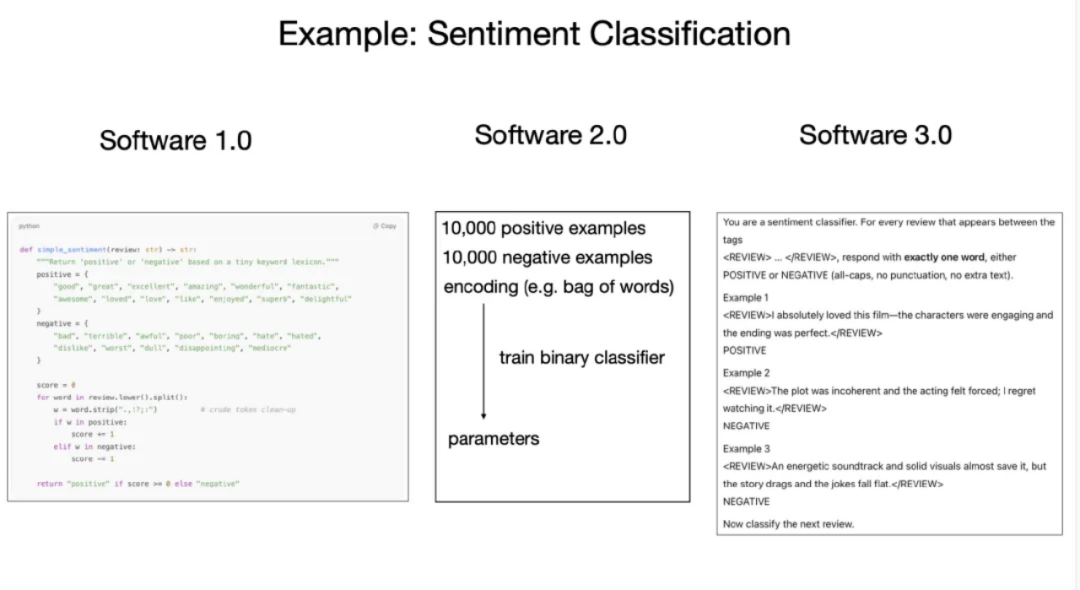
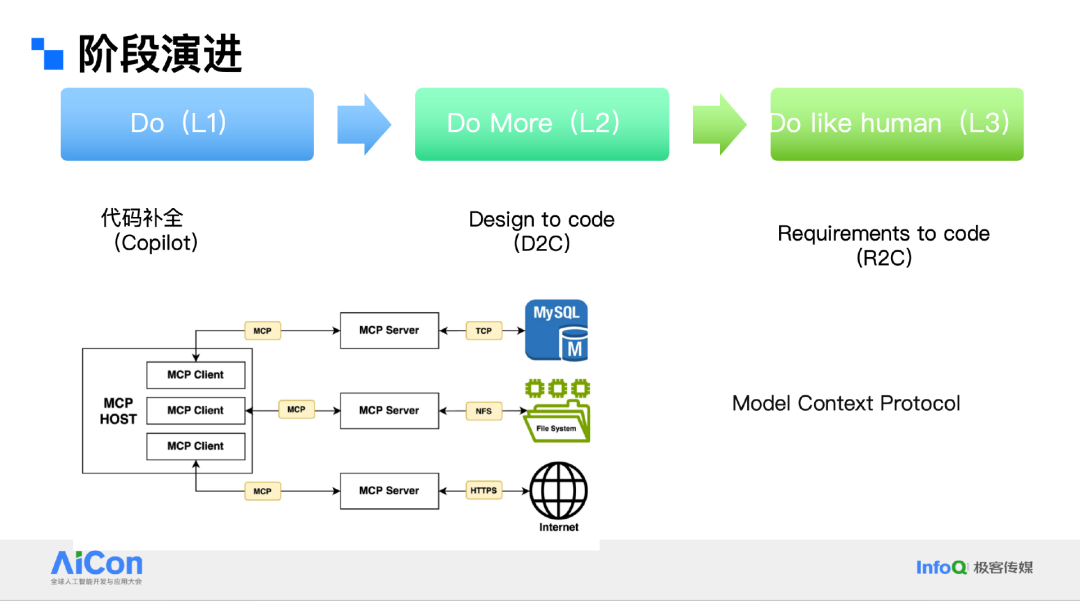
---
The Engineer’s AI Programming Dilemma
- 30–40% of time is actual coding.
- Remaining time: understanding code, tests, feature design, etc.
- Multi-role collaboration (front-end, back-end, design, PM).
- Single-task AI tools don’t scale to global benefits — integration is key.
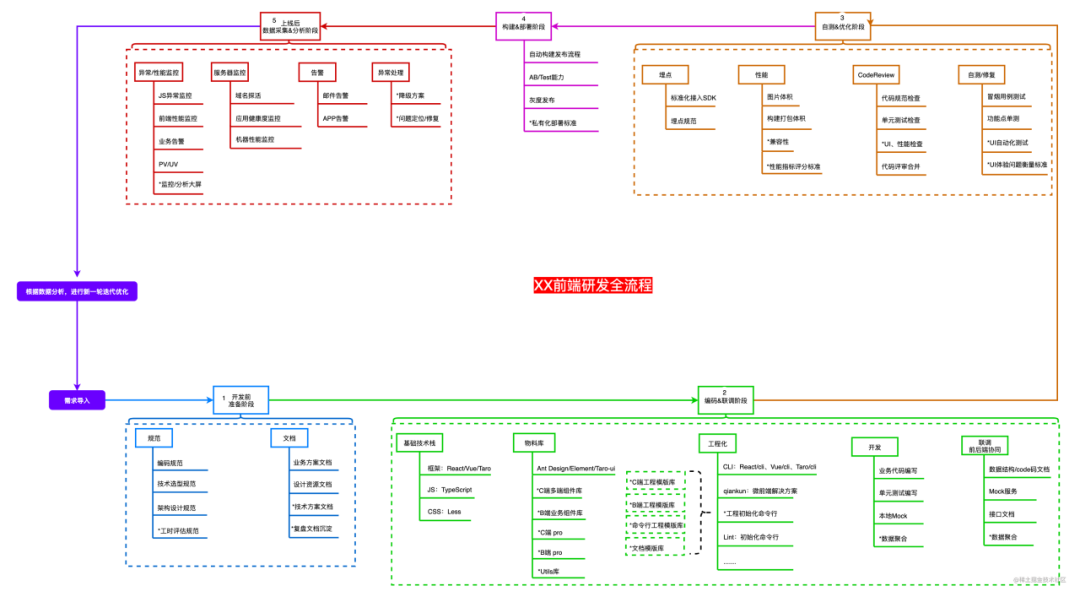
---
The R2C Solution: End-to-End Workflow
Goals:
- Convert any requirement/idea into clear descriptions.
- AI aids from analysis → design → coding → testing.
- Build domain knowledge bases for each team/product.
- Ensure consistent developer experience across tools/platforms.

---
Implementation Framework
- Middle Layer unifies MRD, PRD, technical docs, test cases, drafts.
- Inputs: Structured/unstructured but AI-comprehensible content.
- Initial Phase: VSCode plugin + browser automation to access docs.
- Key Inputs: Requirement documents + design drafts → semantic expressions of design.
Version 1.0:
- Interaction drafts → visual drafts → technical solutions → API docs → test cases → high-fidelity front-end code.
- Engineers mostly filling in minor gaps.
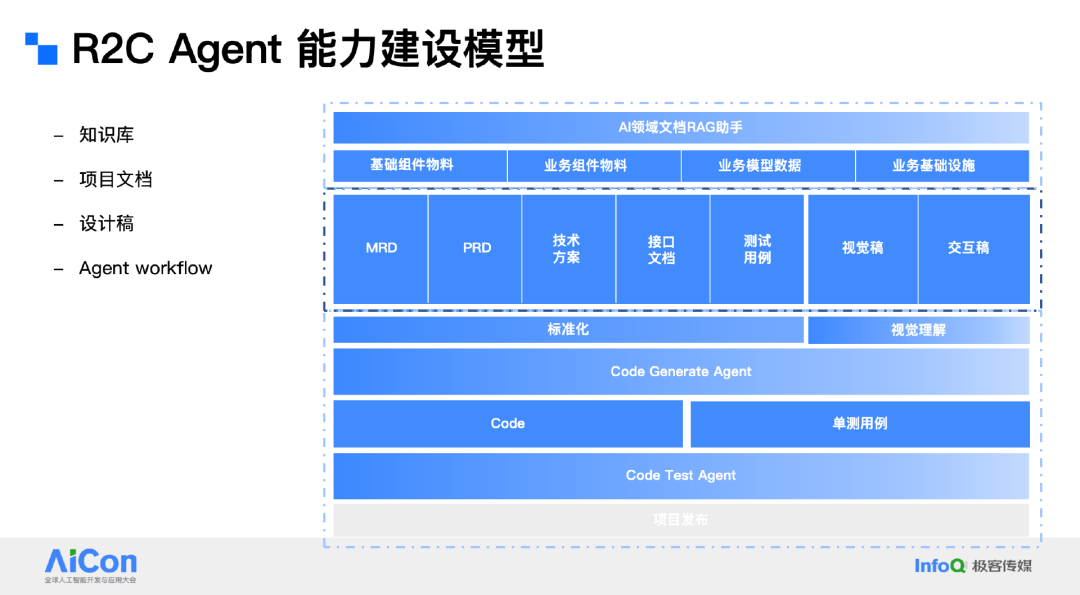
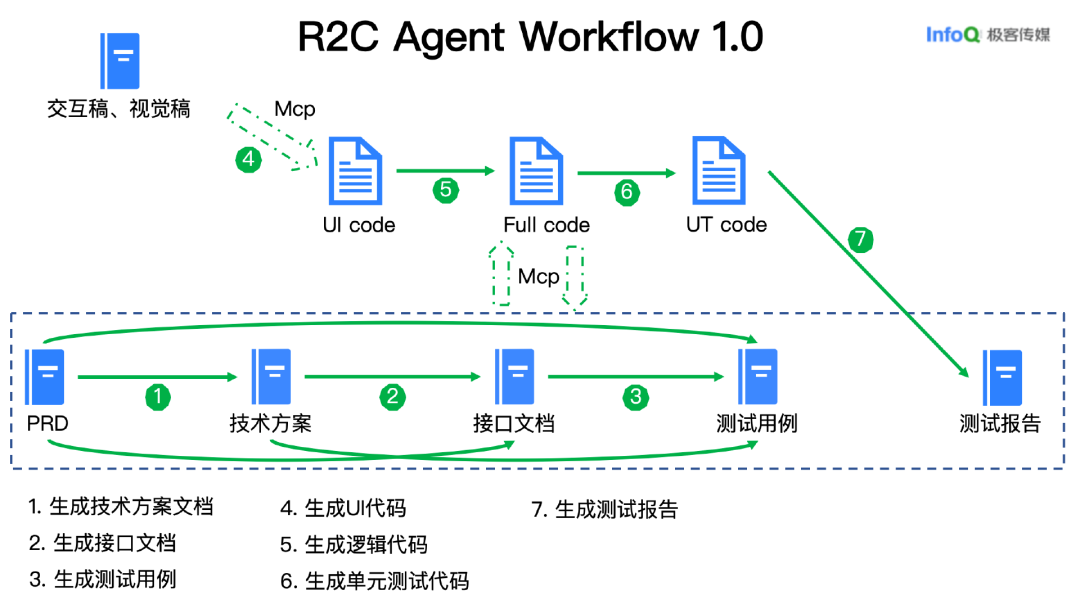
---
Lessons Learned
- AI-generated technical docs improved when engineers authored AI-friendly requirements.
- Adopted MCP services to standardize workflows.
- Organized inputs iteratively:
- Requirement docs
- API specs
- Technical papers
- Knowledge bases
- Visual libraries
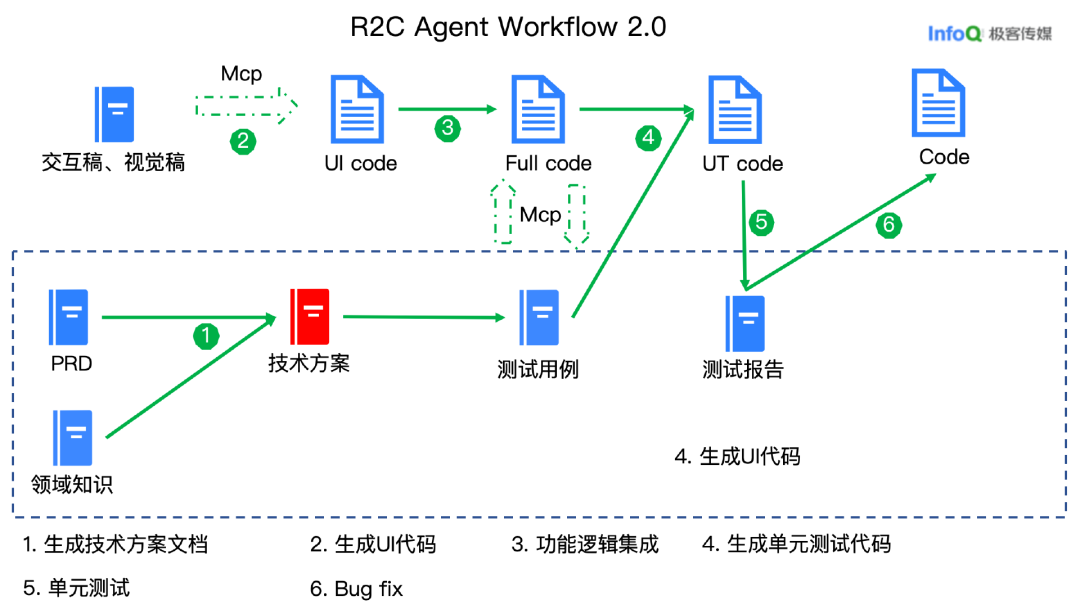
Customization Focus:
- Context window management — only critical content fed to AI.
- Main/sub-task separation — deterministic execution.
- Unified coordination — main Agent directs sub-Agent outputs.
---
Results
- High adoption rates in front-end tasks.
- Significant gains in efficiency & cost savings.
- Requirements → results visible same day.
- Shorter communication cycles.
---
Backend Code Generation
Misconception: AI is bad for backend code.
Truth: Clear APIs + domain models = high quality AI output.
Approach: Reduce manual work → engineers fine-tune.
---
Documentation Management
Why crucial:
- Inputs rely on clear documentation.
- AI can parse legacy systems → produce usable docs → feed knowledge base.
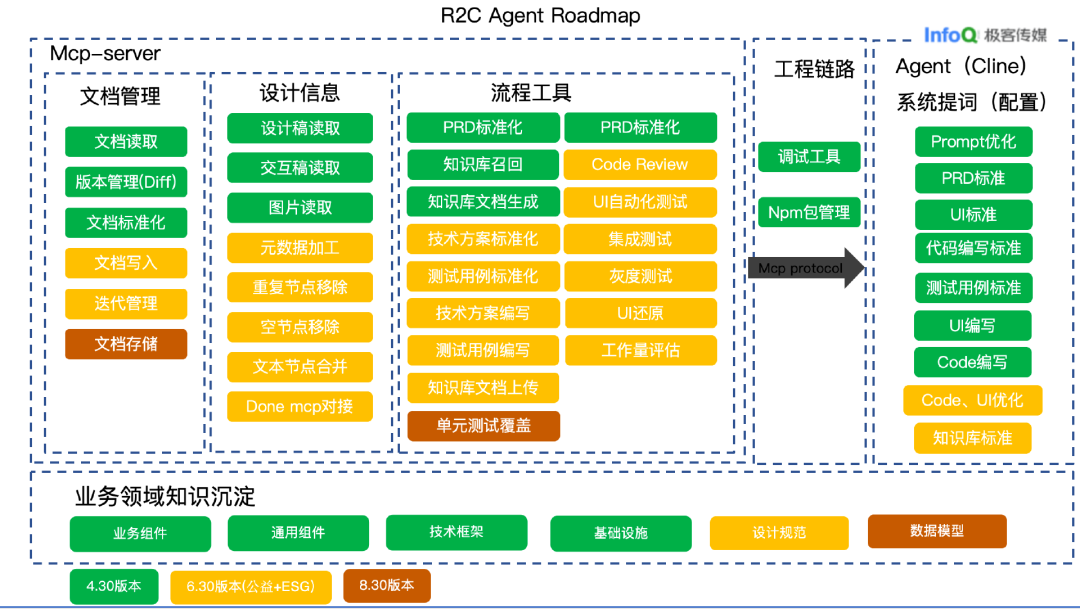
---
AI DEV vs AI CODING
AI accelerates workflows but must be integrated:
- Prevents workflow fragmentation.
- Individual skill boosts value, but systemic processes deliver big gains.

---
Efficiency, Quality & Collaboration
Key insight: AI thrives when work is “AI-friendly.”
Role of humans: Shape inputs AI can interpret effectively.
---
C2C: Component to Code
Front-end reuse strategy:
- Large component libraries.
- Requirements broken into modules.
- Achieved 60–70% strong quality assurance in tasks.
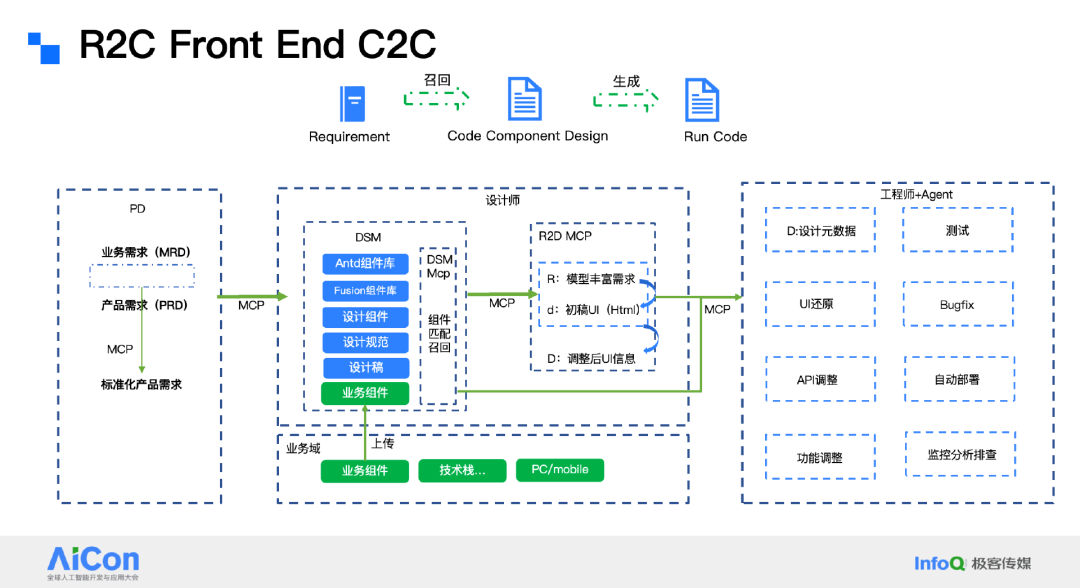
Goal: AI does 50%+ of work → developers provide key input → workflow iterative cycle improves efficiency.
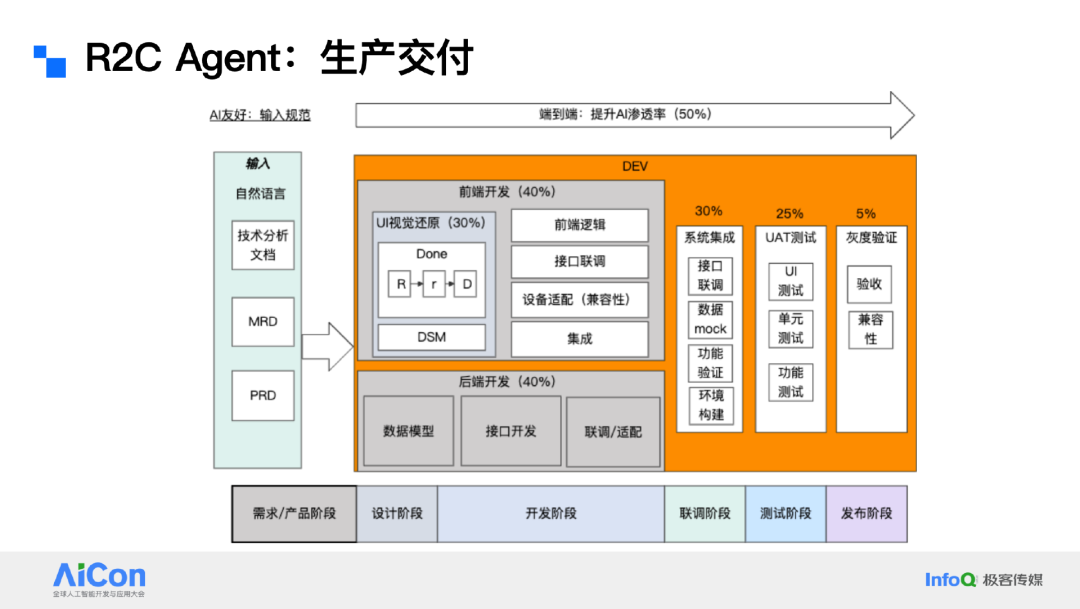
---
Relevant Platforms: AiToEarn
AiToEarn官网 enables:
- Multi-channel AI content publishing.
- Integration with AI tools, analytics, model ranking (AI模型排名).
- Open-source, global scalability for creators and tech teams alike.
---
Recommended Articles
- Google Becomes iPhone’s “Brain Supplier”? Apple Pays $7B for Custom Gemini
- Programming Language Migration “Disasters” — Tech Choices Aren’t Always Technical
- Apple’s App Store Code Leak Shocks Developer Community
- Future Architects Must Understand AI
---
AICon 2025 Beijing: Year-End
Dates: December 19–20
Topics: Agents, Context Engineering, AI Product Innovation, and more.
Highlight: Final session of 2025 with hands-on exchanges and expert insights.

---
---
If you like, I can now also convert this into a concise conference-style summary or technical whitepaper format — so it’s more actionable for product managers and engineers. Would you like me to do that?



